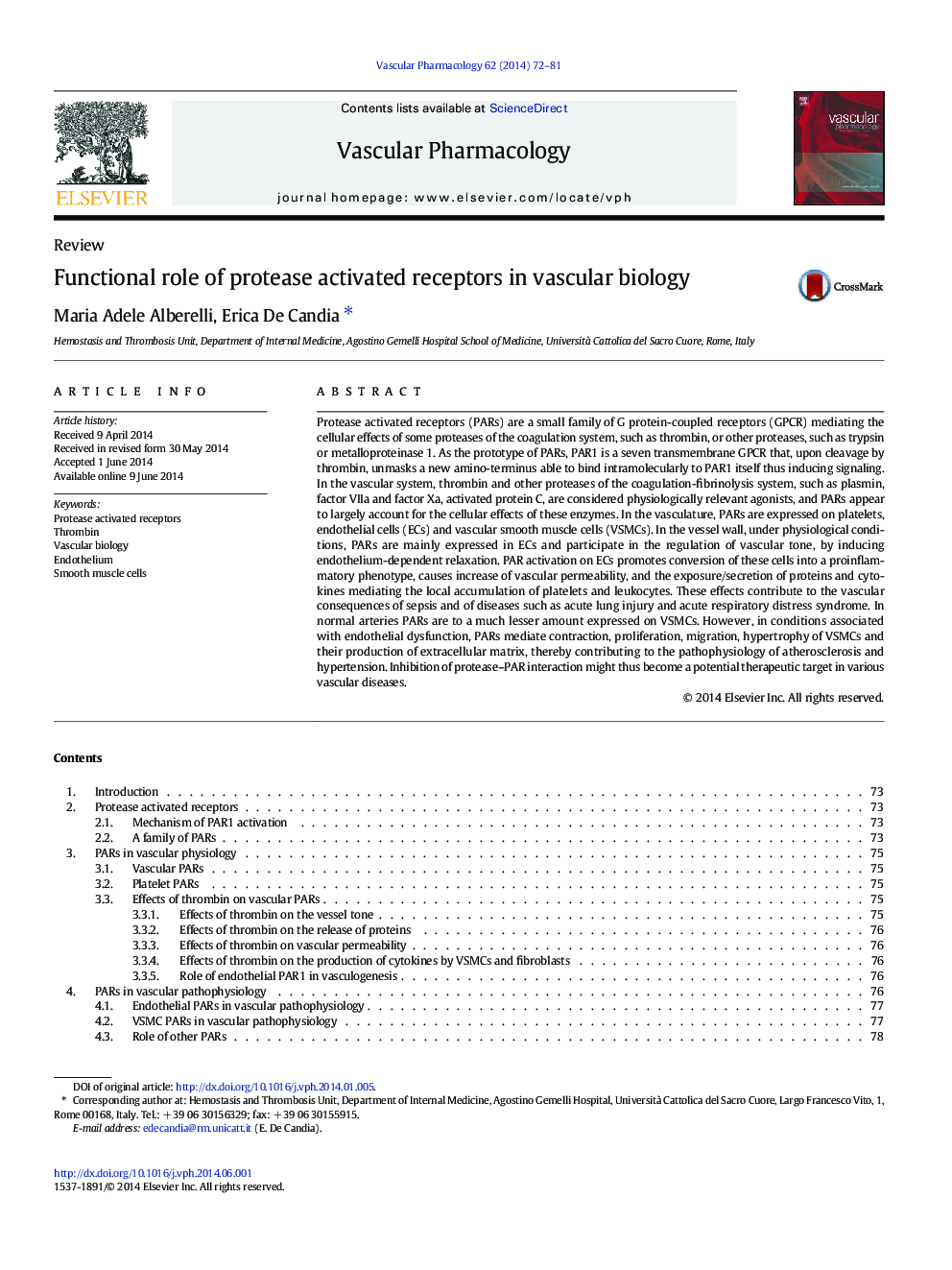| Article ID | Journal | Published Year | Pages | File Type |
|---|---|---|---|---|
| 2574148 | Vascular Pharmacology | 2014 | 10 Pages |
Protease activated receptors (PARs) are a small family of G protein-coupled receptors (GPCR) mediating the cellular effects of some proteases of the coagulation system, such as thrombin, or other proteases, such as trypsin or metalloproteinase 1. As the prototype of PARs, PAR1 is a seven transmembrane GPCR that, upon cleavage by thrombin, unmasks a new amino-terminus able to bind intramolecularly to PAR1 itself thus inducing signaling. In the vascular system, thrombin and other proteases of the coagulation-fibrinolysis system, such as plasmin, factor VIIa and factor Xa, activated protein C, are considered physiologically relevant agonists, and PARs appear to largely account for the cellular effects of these enzymes. In the vasculature, PARs are expressed on platelets, endothelial cells (ECs) and vascular smooth muscle cells (VSMCs). In the vessel wall, under physiological conditions, PARs are mainly expressed in ECs and participate in the regulation of vascular tone, by inducing endothelium-dependent relaxation. PAR activation on ECs promotes conversion of these cells into a proinflammatory phenotype, causes increase of vascular permeability, and the exposure/secretion of proteins and cytokines mediating the local accumulation of platelets and leukocytes. These effects contribute to the vascular consequences of sepsis and of diseases such as acute lung injury and acute respiratory distress syndrome. In normal arteries PARs are to a much lesser amount expressed on VSMCs. However, in conditions associated with endothelial dysfunction, PARs mediate contraction, proliferation, migration, hypertrophy of VSMCs and their production of extracellular matrix, thereby contributing to the pathophysiology of atherosclerosis and hypertension. Inhibition of protease–PAR interaction might thus become a potential therapeutic target in various vascular diseases.
Graphical abstractFigure optionsDownload full-size imageDownload high-quality image (212 K)Download as PowerPoint slide
